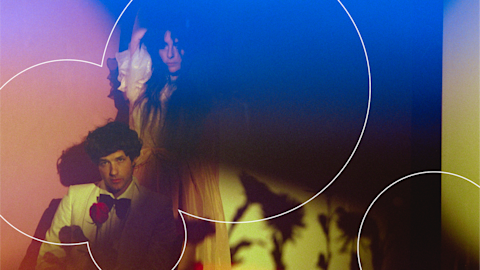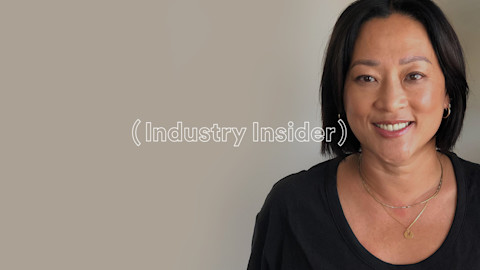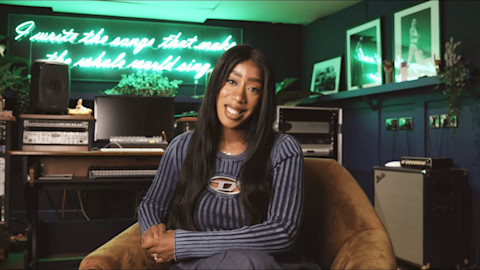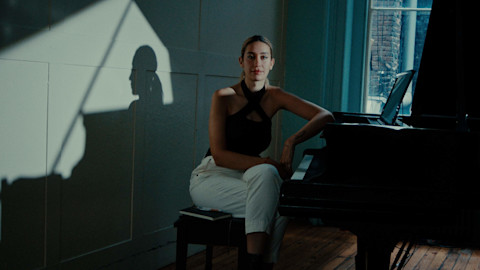Wiz kid Mauri Tapia chose the name of his band, Los Retros, with intent—and he’s often the only one in it. Though he’s typically joined by other players onstage, on albums Los Retros is basically a one-man operation, and the tracks 19-year-old Tapia concocts in his makeshift home studio luxuriate in analog sounds and old-school styles.
A first-generation Mexican American living in Oxnard, CA, Tapia has been recording on his own since age 11. He formed a band at 16 and eventually turned it into a de facto solo project. On Los Retros' debut EP, Retrospect (titled after his original band name), the singer/multi-instrumentalist taps into vintage sounds like classic soul and psychedelic rock, eschewing the electronics favored by so many bedroom-pop auteurs in favor of a room stuffed with real drums, guitars, and keyboards. We asked him for the lowdown on his analog inclinations.
Spotify for Artists: When did you shift from a full band approach to recording everything yourself?
Mauri Tapia: Three or four months after the start of the band. We used to be called Retrospect. It was kind of a full-band thing, and we were all pitching in a piece, but since the recording was at my house I started taking advantage of that. Eventually I got drums, got a bass, and I started doing everything on my own. It was [changed to] Los Retros maybe five months before the release, because Retrospect was already taken, by a band in Thailand I believe.
So many people who record on their own at home tend toward electronics. What drew you to working with old-school analog gear instead?
I would say because of how organic it is. I love analog. Not everything I do is analog, because you get to manipulate sounds on digital. But I do use a mixer that's a hybrid. It's a mixer, it's an interface, and you can record on the board itself, so it's analog and digital. I like the analog sound of things—being able to play live and have it sound the same [on the recording], rather than having to put on so many filters and effects and all this stuff. I like to start with the simple stuff, because I think when the message is really simple, and you come to find out that the instruments are simpler than you think... it shows people, "Hey, I can do it."
What kind of gear are you using on the record?
A Moog Mother-32; it's a semi-modular synth. It's a really simple thing, and I recommend it to people who want to get into synths. Williams digital piano—it has a bunch of cool sounds—the Williams Overture 2. I use a cheap bass—I got it at a swap meet one day, it was like 100 bucks. It's a Samick, a five-string bass. For my guitar songs I use a Starcaster, a very basic Fender guitar. I do it for the reason that it doesn't matter much what you have; if you can get creative with it, you can definitely come out with a great sound. The drums, they're a mixture of Pearl shells and Zildjian hi-hat, and the Sweet Ride [cymbal], it's a K [Series]. I use a mixture of a lot of things, kind of random hand-me-downs.
You've mentioned your parents' love of South American rock bands from the ’60s and ’70s, like Los Angeles Negros, as an inspiration.
As a little kid hearing this growing up I didn't really care much for it, until I really started getting into music, and I was like, "Wow man, I've been really missing out. I could make something like this but in my own style." And that's what I did. I also definitely took some from early ’70s jazz musicians, just the ’70s in general—that's where I got [the inspiration for] "Last Day on Earth" and "Never Have Enough."
What else has had an effect on your sound?
The KPM series—they have a bunch of library music, and some of them really got me into funk and jazz, like Alan Hawkshaw and Brian Bennett. I kind of already knew about Roy Ayers and Parliament-Funkadelic and a bunch of those cats, and it definitely opened up my mind.
It feels like there's a bit of a Beatles vibe on a couple of tracks too.
For "Nostalgic Vibrations," I think we can all tell there's a little something [Beatles-influenced] going on. It's a little descended from one of their songs. The Beatles took a good part in my inspiration for a good while.
Can you walk us through your working process in terms of recording a song in your home studio?
I'll imagine myself in a specific place and I'll just kind of go from there. I'll start with just drums a lot of the time, because I've been obsessed with drums. To me it's like, drums—when you have a specific snare and a specific kick—I think that's all that matters. I've always questioned, how do [other] artists get their snare to sound so crisp and so thick? I'll just start on drums, then I'll probably play keys. Then I'll play bass, add vocals—that's kind of the whole formula right there, but recently I've been experimenting more. If I feel [an overdub] is not gonna hold the song together for the next instrument to jump on it, I'll redo it. That's about as simple as my process is.
—Jim Allen






